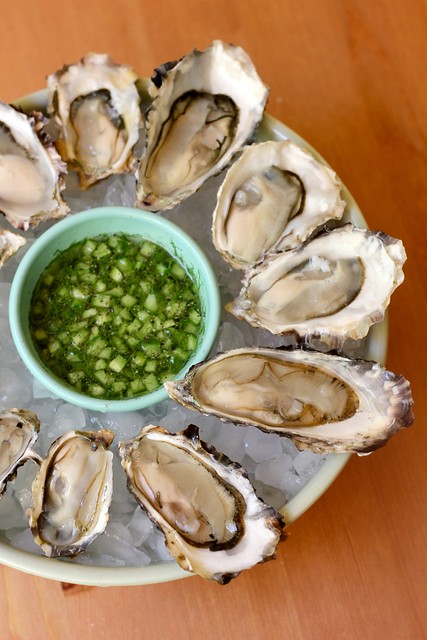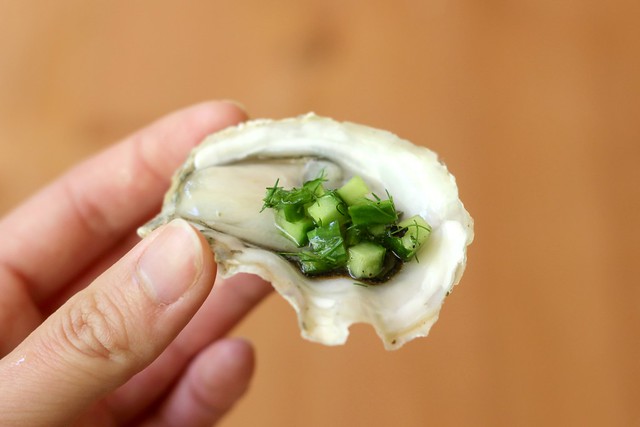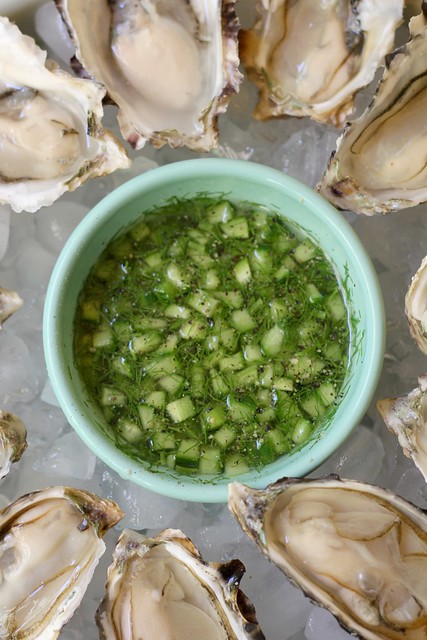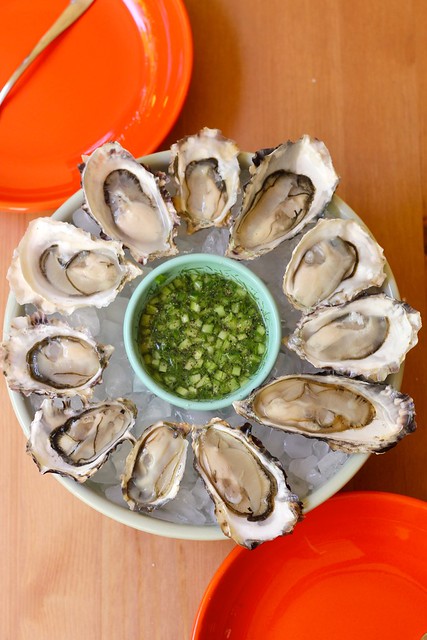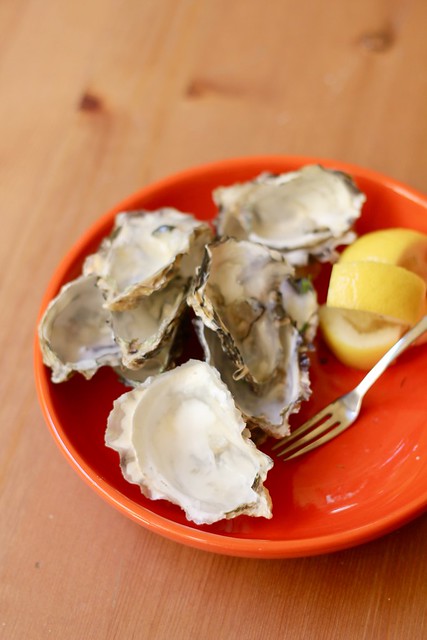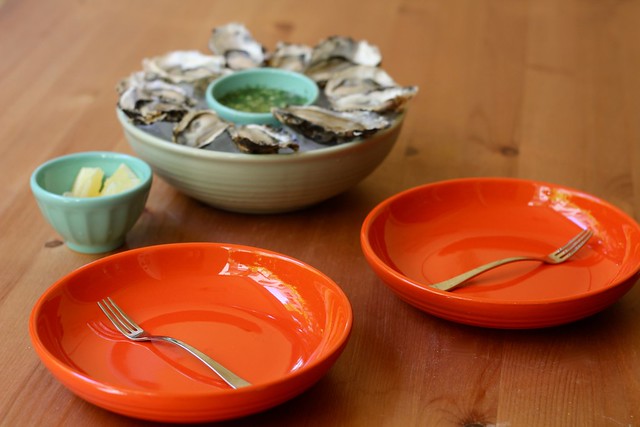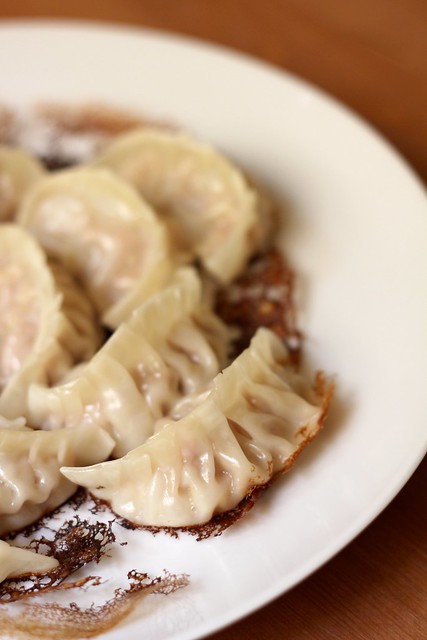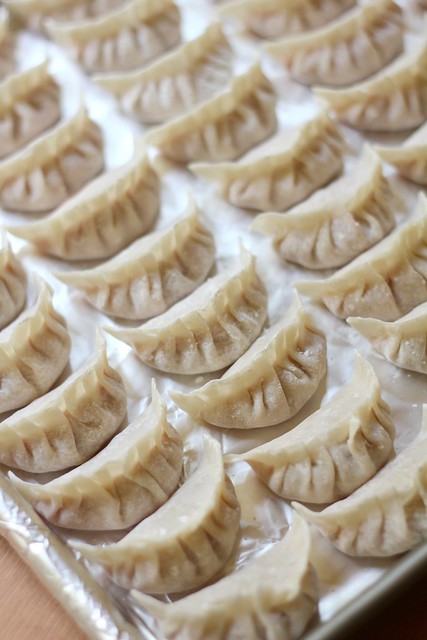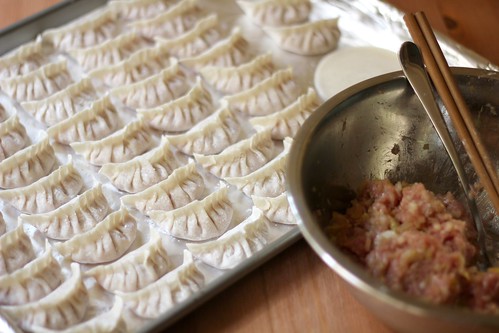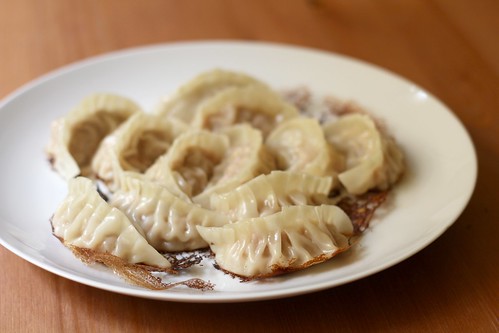All it took was a dozen Luna oysters and a quick, under-a-minute, tutorial from the two Frenchmen manning the Carlsbad Aquafarm booth at the Santa Monica Farmers' Market for me to become a master oyster shucker.
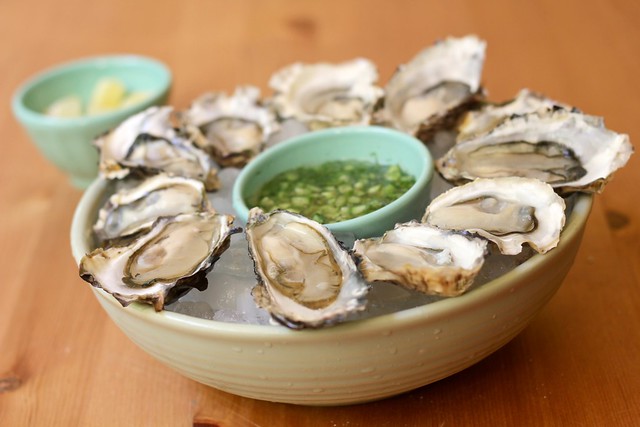
Before I embarked on my oyster shucking adventure, I wondered whether strength or skill would be more essential to my success. In most of life's situations, I would say skill is more important than brute strength. In oyster shucking, I have to give strength a slight advantage. I can only shuck about a dozen before I have take a break, eat the dozen oysters, and then shuck some more oysters. That being said, it's skill and a thick kitchen towel, rather than strength, that will save you from stabbing through your palm with an oyster knife.
First, hold the oyster between a folded kitchen towel, cup side down, flat side up. The trick is to get the tip of the knife into the "hinge" or little crevice at the narrow end of the oyster (dirty?). Being the wimp that I am, I have to really work to get the knife through the shell. I do this by twisting and wiggling the knife left and right as if it were a drill. Once you're in, you'll realize that the poor oyster's adductor muscles are still trying to hold its shells together. Lift the flat shell up and scrap the muscle off with the knife. Run your knife under the now exposed oyster flesh and loosen the other adductor muscle attached to the curved shell. Try not to lose too much of the briny liquor. These are the only tricks I have to offer. If you don't have oystermen at your local farmers' market, take a look at this video. It's not the most exciting video and there's no French accent, but it will do.
I meant to take pictures of this process, I really did, but it's impossible to shuck an oyster while simultaneously working a camera. Oyster shucking is a two-handed job.
I like my oysters with a simple squeeze of lemon, but since I always get a slight hint of cucumber from Luna oysters, I thought a cucumber fennel mignonette could be fun. Why fennel? Because I am STILL obsessed with fennel.
Cucumber Fennel Mignonette
1 persian cucumber
fennel fronds
4 tablespoon rice wine vinegar
2 teaspoon sugar
fresh cracked pepper
Cut the cucumber in half, lengthwise, and scrape out the seeds/pulp with a small spoon. Do a nice, fine dice on the cucumber, chop up some fennel fronds, and combine with the rice wine vinegar, sugar, and pepper. Prepare this before you start shucking oysters and by the time you're done, the all the ingredients in the mignonette will have become good friends.
To enjoy my beautifully shucked oysters, I've been arranging them on my new pasta bowl and salad plates from Bauer Pottery. Though not holding what they were intended for, the bowl is the perfect size for a bed of crushed ice and a dozen oysters, and the salad plates in the signature "Bauer Orange" add such a nice splash of color. The servingwares' bright colors and shapes are inspired by a Californian lifestyle, and if a summer of freshly shucked oysters from the Santa Monica Farmers' Market, enjoyed on my patio in beautiful weather doesn't scream California, I don't know what does.
Thus, my current Saturday morning ritual involves visiting the farmers' market, picking up a pint of Gaviota strawberries from Harry's Berries and a $10 bag of a dozen Luna oysters from the Carlsbad Aquafarm. I come home, shuck my oysters, invite a friend if I'm in a sharing mood, and happily slurp oysters to my heart's content. If you love oysters, but have never shucked an oyster, it's time you get over your inhibitions and just do it. It's done wonders for my Saturdays and my oyster addiction. I've even started blogging again.

